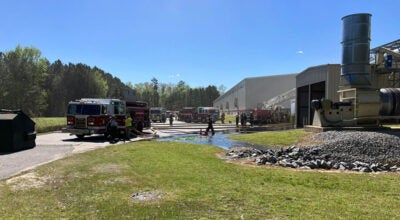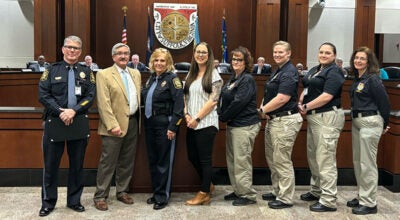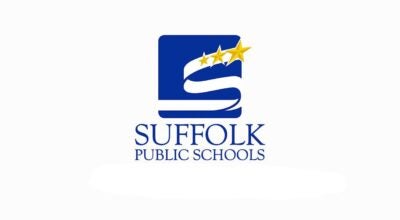Governor: ‘Time to find path forward to in-person learning’
Published 7:07 pm Friday, February 5, 2021
|
Getting your Trinity Audio player ready...
|
In an effort to address learning loss and other mental and behavioral health issues brought on by the coronavirus pandemic, Gov. Ralph Northam has called for the state’s school divisions to have in-person learning options by March 15.
Northam also called for school divisions to expand summer school options for students.
“We can do this, and we must do this,” Northam said during a Feb. 5 news conference.
Northam shared his message in a call with state superintendents earlier in the morning. He said the call “was a very open, frank conversation” between Northam, state Superintendent of Public Instruction Dr. James Lane and state Secretary of Education Atif Qarni.
“I gave them the plan, our marching orders, if you will,” Northam said. “They are in line with that and I expect the superintendents, the school boards, our teachers, everybody will come on board with them and get our children back in the classroom.”
And though Northam cited a record month of January for the number of COVID-19 cases, hospitalizations and deaths across the state, he noted the trends downward in all those areas, just as new, more transmissible variants have been detected in the state.
“When school divisions were planning this school year, there was a lot of uncertainty,” Northam said. “There were no simple or easy decisions, not for school administrators, teachers or parents. But we’ve seen more data now, and it suggests that schools don’t have the kind of rapid spread that we’ve seen in some other congregate settings. That tells us that it’s time to find a path forward to in-person learning.”
In Suffolk, the seven-day moving average for percent-positivity is 16.7%, with the daily case count per 100,000 people declining to 59.8. In Isle of Wight County, the percent-positivity is 14.7%, with 69.2 cases per 100,000 people. Franklin’s percent-positivity is 12.6% with 71.3 cases per 100,000 people, while in Southampton County, it has a 15.1% positivity rate and 45.5 cases per 100,000 people.
Suffolk Public Schools and Franklin City Public Schools have remained all-virtual with the exception of some special education students. Suffolk’s school board is expected to review COVID-19 health metrics at its Feb. 11 meeting, while Franklin’s school board previously voted to remain all-virtual through at least the third nine weeks.
Isle of Wight County’s school division has indicated that some students on its in-person learning plan might be able to return to classes full-time Feb. 16 depending on local COVID-19 health metrics. School officials there plan to announce whether pre-K through fifth-grade students will return to school five days per week Feb. 8.
Southampton County Public Schools has said it would offer in-person instruction for those who want it beginning Feb. 8, depending on COVID-19 health metrics.
Northam cited myriad reasons to push for school divisions to offer in-person learning options for students.
“My fellow pediatricians say they’re seeing increases in behavioral problems, mental health issues and even increases in substance abuse among their young patients,” Northam said. “They’re writing more prescriptions such as anti-depressants and stimulants, and that’s just not a good direction for us to keep going.”
On top of that, Northam noted a decline in academic performance.
A survey of 132 school divisions from the Virginia Department of Education showed 40 that ranked failing students as the biggest issue with remote learning, ahead of access to reliable internet, which was rated the greatest challenge to remote learning by about 36 school divisions. More than 50 school divisions around the state have higher absentee rates during the current school year than in the previous one.
Also, the Phonological Awareness and Literacy Screening data indicates that those in kindergarten and first grade at high risk for reading failure have increased. At the kindergarten level, it has gone up from 17.9% to 27.2%, and for first graders, has increased from 18.3% to 28.5%. Those increases have been highest among Black, Hispanic, economically disadvantaged and English learners.
Kindergarten teachers, according to the survey, are also concerned about their students’ social and emotional well-being.
More than 20 school divisions have also reported a more than 30% increase in middle and high school students failing two or more classes.
Northam closed the state’s public and private schools in late March 2020, and many private schools have reopened. As of Jan. 26, 42 school divisions were fully remote, but just 15 were fully in-person.
The state issued guidance to school divisions last month to aid in planning for a safe return to in-person learning. He said the March 15 deadline was for school divisions to have plans available for in-person learning, as well as for summer school options.
“This won’t be mandatory,” Northam said, “but it definitely needs to be an option. Our children need to catch up to be ready for learning in the fall.”
Northam said school divisions will have the resources they need for summer school through the federal CARES Act, along with state money.
“We will do everything we can to support it financially,” Northam said.
Lane said about 90% of the roughly $930 million in CARES Act money has already been given to local school divisions.
He said getting students back in classrooms “(is) critical to prevent greater learning loss and to support our children’s health and well-being.”
Lane said with school staffing shortages, divisions would continue to have flexibility in offering waivers of certain requirements, particularly for teachers.
Northam said the Centers for Disease Control and Prevention’s recent guidance said it is possible to have students be safe in classrooms.
“The experience of school divisions across the state shows us that it’s possible to have in-person learning,” Northam said. “Daycare centers and early childhood educators have demonstrated this throughout the year. We know the right things to do — requiring masks, keeping desks further apart and more.”
Northam said the state has prioritized vaccinating teachers — though it won’t be mandatory — and have provided funding to school divisions to allow for increased safety measures.
Asked about the possibility of year-round school in school divisions as an option, Lane said that “certainly, it would be our expectation that teachers would be compensated for any additional time over and above their contract.”
Lane expects school divisions to go in different directions to make up for the lost time in classrooms.
“I think the school divisions, some will do year-round schools, some will do additional summer school, some may add time to their calendar, some may add time to the school day,” Lane said. “And we’re going to work with them between now and March 15, and then on into the summer on what those plans look like. If they need extra support from the state, we will be there to help them.”
Virginia Education Association President Dr. James Fedderman will be a part of the state department of education’s Virginia LEARNS Workgroup to guide public schools on remediation and recovery in addressing student learning loss, flexible calendars, and how to think about next year in the context of what the state has seen before March 15.
Fedderman said arbitrary deadlines are not the best way to move forward.
“Instead, we must keep our focus on ensuring that all school staff members have the opportunity to be vaccinated,” Fedderman said in a statement, “and that all necessary safety precautions and mitigation measures are in place, along with the resources to sustain them.”
Fedderman said an expanded summer school program, staffed by educators who choose to participate and are paid for their work, would be able to help students and families offset potential learning losses, which “are best determined by educators with instructional goals, not politicians with political ones.”
Northam said he understands the anxieties many feel about opening schools with still high COVID-19 positivity rates and case counts, but still reiterated his main point: all schools need to be open, and sooner rather than later.
“I know this has been hard on everyone,” Northam said. “It’s been a school year like no other. It’s been hard on children and it’s been hard on teachers, but we also know this plain fact: children learn better in classrooms, and that’s where they need to be.”





